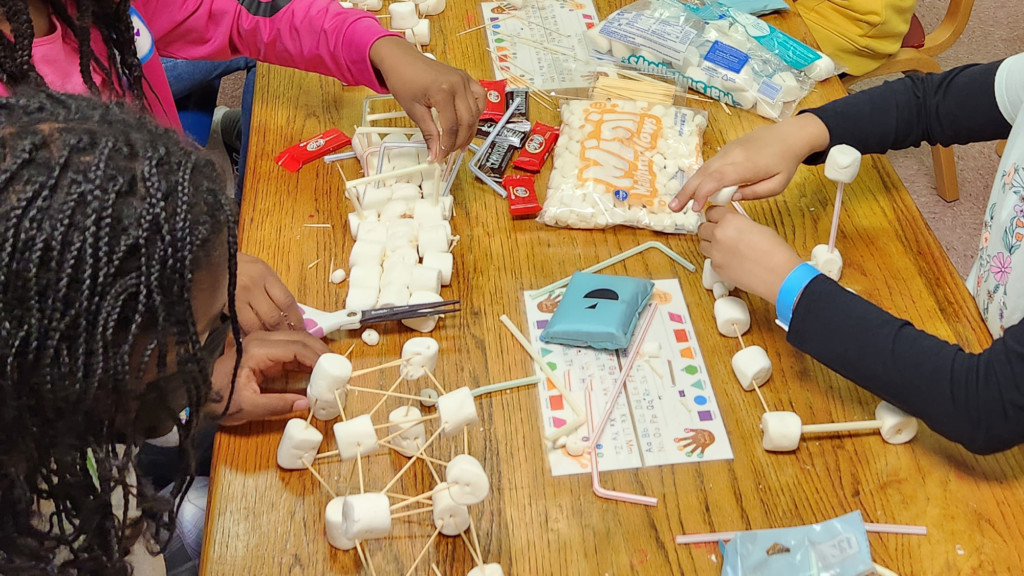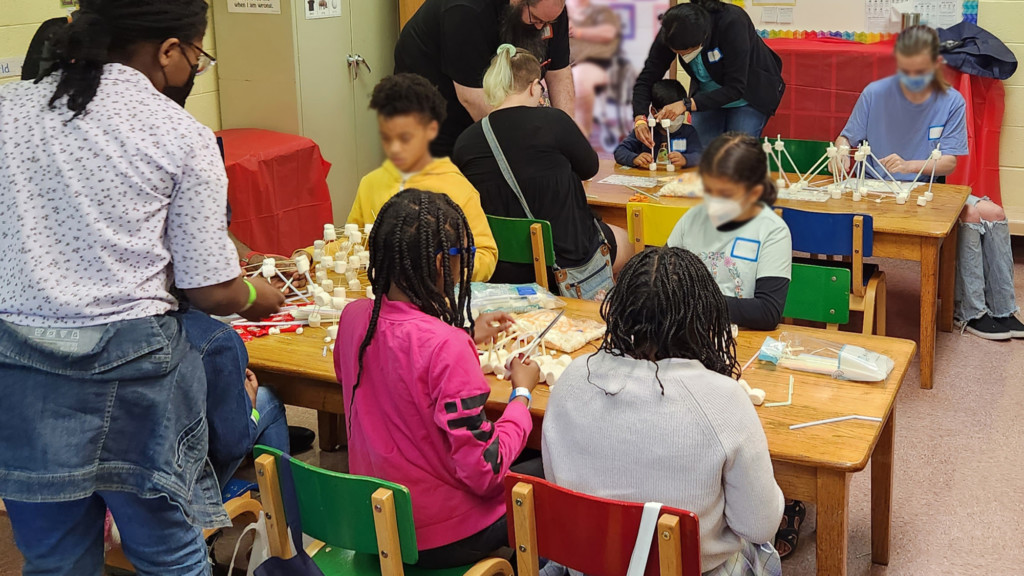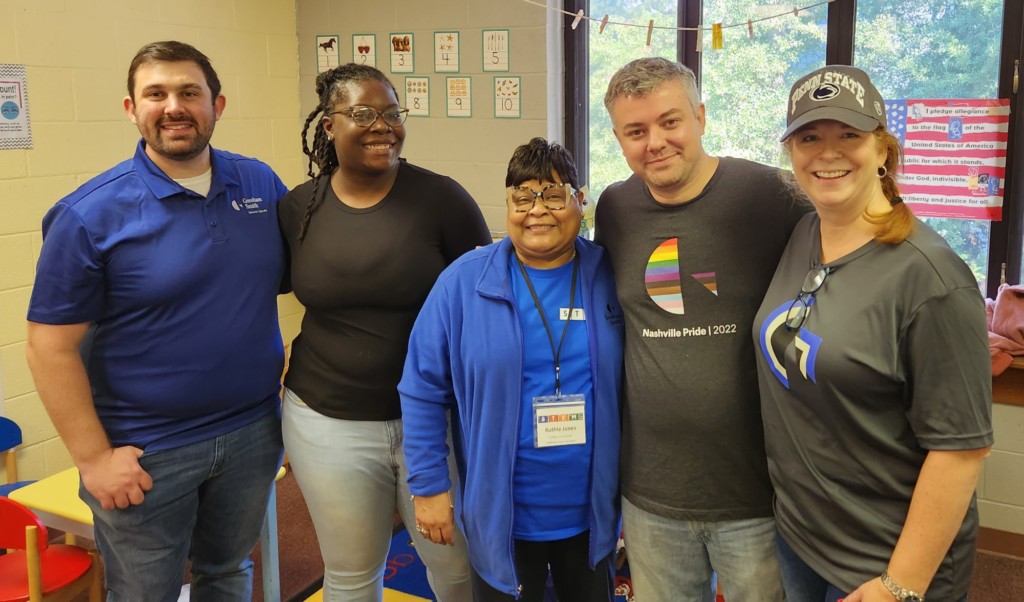Despite a shortage of skills in most of the technological fields, women make up only 28% of the workforce in science, technology, engineering and math (STEM) occupations. The gender gaps are especially high in some of the fastest-growing and highest-paid jobs of the future, like computer science and engineering.
There are a number of things that can be done to help rectify this disparity—from giving girls and women the skills and confidence to succeed in math and science to improving STEM education and support for girls starting in early education and through grades K-12.
In celebration of International Day of Women and Girls in Science, we sat down with Jeremy Busby, Georgia Program Management Department Leader in Gresham Smith’s Midtown Atlanta office, to learn more about how he and his colleagues from the Midtown office recently joined forces with other members of the engineering community for STEM Day: Dream Big 2022 as a part of Gresham Smith’s larger initiative to help close the STEM gap.
Tell us about the STEM Day: Dream Big 2022 program and the Midtown Atlanta office’s participation.
Jeremy Busby: It’s an annual event sponsored by the American Council of Engineering Companies (ACEC) Georgia that’s aimed at introducing students, both girls and boys, grades 3 through 8, to engineering through fun projects and activities. Gresham Smith was a presenting sponsor, and this is the second year in a row we were invited by ACEC to take part in the program.
Around 100 girls participated in this past October’s event, which was held on a Saturday at Embry Hills United Methodist Church campus. It included hands-on activities led by engineers and scientists as well as college and professional organizations. There was also an information session for parents of students to learn more about how to navigate STEM fields and education.

Our Midtown Atlanta office’s participation was spearheaded by Ruthie Jones, Gresham Smith’s Georgia Right of Way Acquisition Department Leader. Five of us volunteered for the program, and we were absolutely overwhelmed by the turnout at our booth.
ACEC’s directive was that all hands-on activities had to be fun, engineering-related, and could be performed either individually or in pairs. Our group’s activity involved the creative use of marshmallows, toothpicks and candy bars.
Armed with those items, the students were challenged to build a bridge that was 2 to 3 inches tall and could support the weight of as much candy as possible. Once they’d built the structure, we added one candy bar at a time to see how much weight it could handle. One of the girls constructed a bridge with enough load-bearing capacity to handle 75 mini candy bars before it collapsed, which was pretty much all the candy we had! A nice little bonus was that the winner got to take the candy home.

What were some of the lessons learned from that activity?
Jeremy: The overarching lesson from the exercise is that the students got to learn about the fundamentals of engineering while flexing their problem-solving skills. The activity also served as an important takeaway for the girls in the sense that they didn’t need a boy or a man to solve the problem for them—they could figure it out on their own or in collaboration with another girl their age. It showed them that: Yes—you can be an engineer, too! It’s a career path that you absolutely can follow.
“It showed them that: Yes—you can be an engineer, too!”
Why do you think there’s still a significant gap between the number of women versus men in STEM careers?
Jeremy: I think one of the reasons for the gap, historically, is because people tend to think that it’s someone else’s problem, and that somebody else, somewhere, is working on it. And though it’s human to get caught up in what we’re tasked with on a daily basis, we can end up waiting for someone else to change the world when we can change it ourselves. Even if it’s only one baby step at a time, it all adds up.
Ultimately, it’s the seemingly small things we do that make this industry better, like lending our time to events that help break down the barriers and close the gap between women and men in STEM occupations. Time is truly the greatest resource we have, and if this particular disparity or any other inequality is important to you, then you have to put some time behind it—otherwise it’s just lip service.
There are all kinds of opportunities to give of your time and expertise through professional organizations like ACEC or WTS (Women’s Transportation Seminar) They’re always looking for mentors and volunteers to support their various initiatives. That’s one of the reasons I feel so fortunate that Gresham Smith has a culture that encourages its employees to give back to the community, including professional organizations that work to promote women and girls in STEM. We not only give back through external efforts, but also through internal initiatives such as our Employee Resource Networks, including our Women’s ERN, that influence positive change both inside and outside of the firm.

Although STEM occupations are still disproportionately held by men, women are starting to achieve significant gains in science, technology, engineering and mathematics. Do you think initiatives that bring more women and girls into STEM have been instrumental in this?
Jeremy: I do. I think they help to show women and girls that there’s an exciting place for them in STEM professions. It’s also a great way for women who have succeeded in the AEC industry—like our very own Ruthie Jones, Heidi Schneider and Lakisha Green—to serve as mentors and show other women and girls that they, too, can have a successful career in those fields.
“… if this particular disparity or any other inequality is important to you, then you have to put some time behind it—otherwise it’s just lip service.”
Why is investing time in STEM activities that support diversity important to you personally?
Jeremy: Because women and a very diverse set of individuals have been instrumental in the success of our firm, and we need to have a diverse leadership pool to continue to be successful. Investing in STEM activities that support diversity is one of the ways we can achieve this because it encourages the labor pipeline to be as full as it can be, which will result in a diverse and talented STEM workforce.
I’m always conscious of the fact that the girl or boy I give my time to today may well be applying for a position at our firm in the future. And I personally look forward to that day—when that type of a lifetime investment in both time and resources pays off.